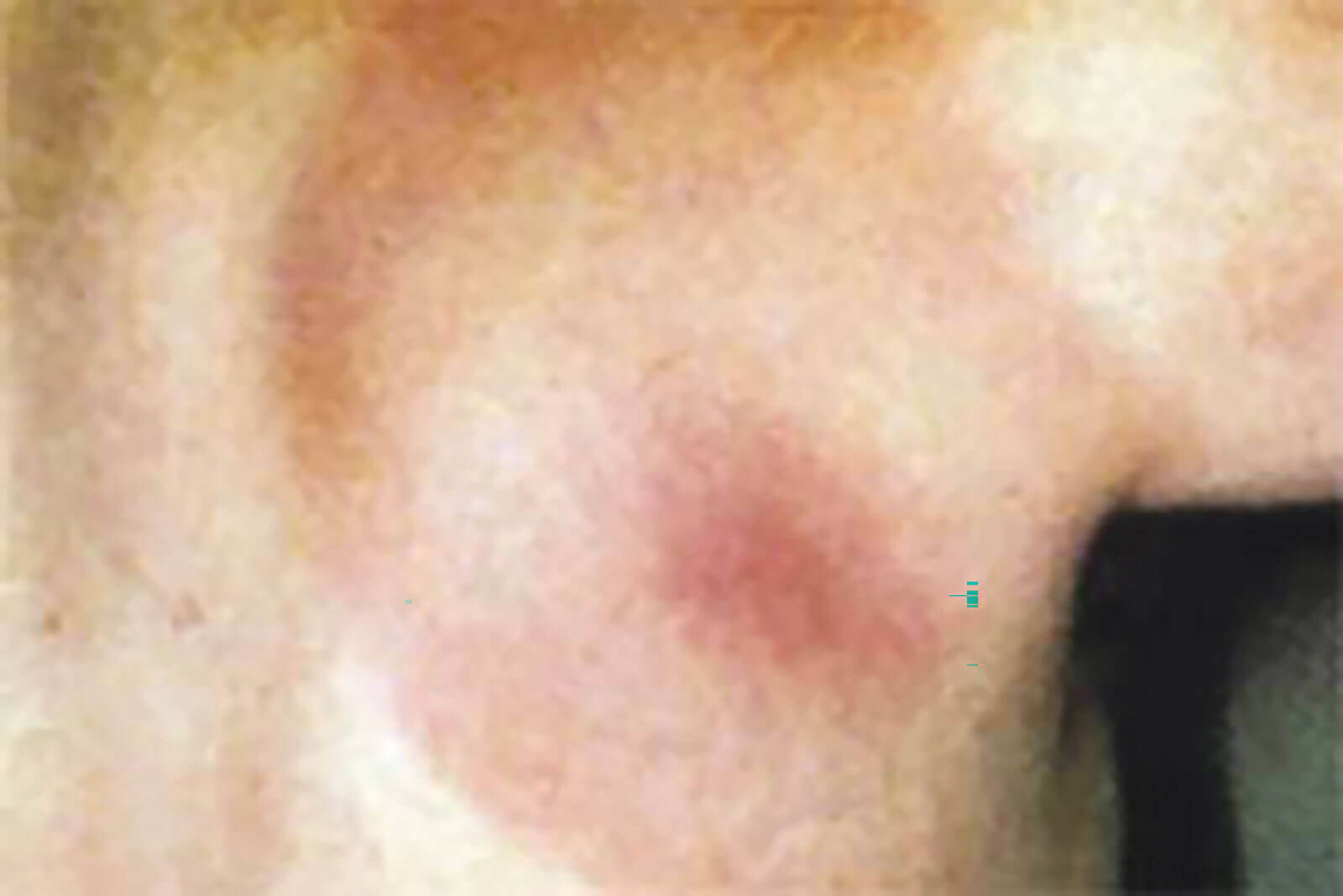First Symptoms Of Lyme Disease
The first symptoms of Lyme disease are marked by a combination of symptoms which may include:
- fatigue
- tiredness
- headache
- joint and muscle pain
- erythema migrans (a characteristic skin rash sometimes referred to as a Bulls Eye Wound Of Lyme Disease)
- chills and fever
Erythema migrans – Bulls Eye Wound Of Lyme Disease

The most distinctive of the first symptoms of Lyme disease is Erythema migrans, a large circular red blotch which covers the area of skin where the infected tick initially bit the human host.
This large red patch is sometimes referred to as a 'Bulls Eye wound'. 'Bulls eye' represents the red circular appearance and similarity to the bull's eye on a dart board and 'wound' due to the color and progressive size of the patch. The Bulls Eye Wound is not actually a wound but a skin reaction to the bite of the Lyme disease infected tick.
The Bulls Eye wound usually develops between 3 days to 1 month after the human host receives a bite from an infected tick.
At first, a red patch appears over the site of the bite which grows larger. In the early stages the red patches vary in size and shape but as they expand they take on a large circular appearance resembling a bulls eye. The bulls eye wound (red patch) is not normally painful although it may be warm to touch.
Not all red patches over the bite site indicate an emerging bull's eye wound. An allergic reaction to the saliva of a tick can produce redness over the ticks bite site.
However these reactions typically appear within a few hours to a few days after the bite and not during the 3 days to 1 month period associated with the bull's eye wound (erythema migrans).
Allergic reactions to the bite do not usually cause the red patch to expand and in most cases the patch disappears after a few days.
It should be noted that not all people infected with the Lyme disease bacterium will have the same symptoms.
The bulls eye wound does not always develop over the area of the bite.
In some cases infected people may not experience these first symptoms but later develop another set of symptoms some time after initial infection ( see late symptoms of Lyme disease).